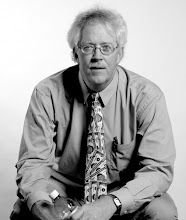This week, students in the Navajo Oral Histories Travel Study class met twice via Interactive Television to look at first drafts of their projects and hear suggestions from each other for additional resources, improvements, edits, etc.

(photos by Chops Hancock)
The digital link between the Winona State University campus, in Winona, Minnesota, and the Diné College campus in Tsaile, Arizona, worked well. Students could see and hear each other, and we watched short video segments, viewed photographs, listened to audio samples, and watched a SoundSlides project.
The student projects are coming along very well. I was impressed with the effort the students have been putting into faithfully telling the stories of the Navajo elders while making the pieces interesting, and engaging. It is hard work, and sometimes tedious, to go through hours of interviews or hundreds of photos to choose the best material, then organize it into a meaningful piece of documentary journalism.
One of the strengths of our program is that the student teams each met with their elders several times and did a service project with and for the elders. A relationship of trust and respect was built between the students and the elders. I think this means the students take very seriously their responsibility to get the story right.
The students now have about two weeks to do further work on their projects and then submit a final draft in mid-July.
The faculty associated with the program will review the student projects and suggest additional edits or changes if necessary. Then, the projects will go to the Navajo Nation Human Research Review Board for review.
Plans call for the finished projects to be published in fall in conjunction with celebratory receptions. The projects will be published on the WSU Mass Communication's new web site: Winona360.org, and will be made available for publishing by the Navajo Times newspaper, the Winona Daily News, and Diné College.
Each elder featured in the projects will receive copies for their own use, and copies will be archived at both higher education institutions, and at the Navajo Nation Museum, and Navajo Nation Library.
I'm eager to see the finished projects -- I know they will be excellent.



No comments:
Post a Comment